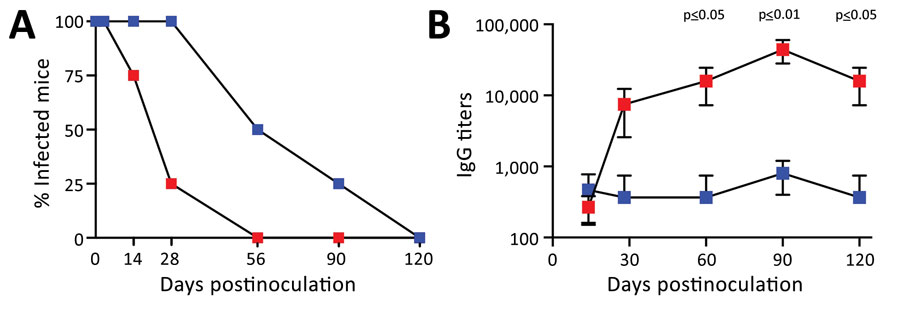Volume 27, Number 8—August 2021
Research
Modeling Immune Evasion and Vaccine Limitations by Targeted Nasopharyngeal Bordetella pertussis Inoculation in Mice
Figure 5

Figure 5. Comparison of serum IgG titers from mice receiving LD nasopharyngeal inoculation and HD pneumonic inoculation of Bordetella pertussis. Blue squares indicate LD mice; red squares indicate HD mice. C57/Bl6 mice received LD of 500 CFU of B. pertussis in 5 µL phosphate-buffered saline (PBS) via nasopharyngeal inoculation or HD of 500,000 of B. pertussis CFU in 50 µL PBS via pneumonic inoculation. Error bars indicate SD for 4 biologic replicates. A) Percentage of mice (4 per group) colonized on days 3, 7, 14, 28, 60, 90, and 120 following inoculations. Studies on days 3, 7, 14, and 28 were conducted 4 times; the 120-day experiment was conducted once. B) B. pertussis IgG titers in serum over time. HD, high-dose–high volume; LD, low-dose–low-volume.
1These authors contributed equally to this article.
2Current affiliation: University of British Columbia, Vancouver, British Columbia, Canada.
3Current affiliation: Friedrich Alexander University Erlangen-Nuremberg, Erlangen, Germany.
4Current affiliation: Louisiana State University Health Science Center, Shreveport, Louisiana, USA.
5Current affiliation: Augusta University, Augusta, Georgia, USA.